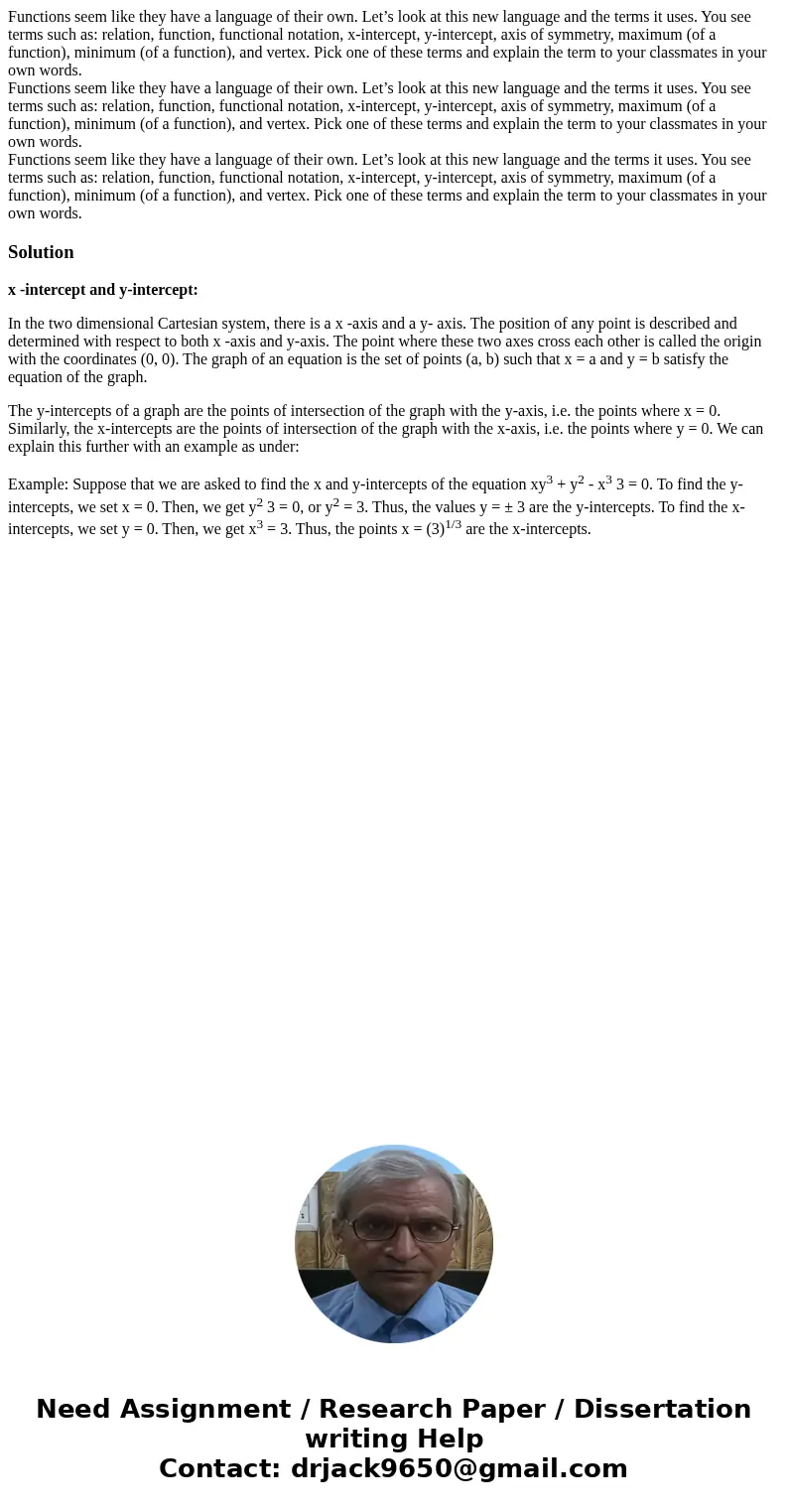Functions seem like they have a language of their own Lets l
Solution
x -intercept and y-intercept:
In the two dimensional Cartesian system, there is a x -axis and a y- axis. The position of any point is described and determined with respect to both x -axis and y-axis. The point where these two axes cross each other is called the origin with the coordinates (0, 0). The graph of an equation is the set of points (a, b) such that x = a and y = b satisfy the equation of the graph.
The y-intercepts of a graph are the points of intersection of the graph with the y-axis, i.e. the points where x = 0. Similarly, the x-intercepts are the points of intersection of the graph with the x-axis, i.e. the points where y = 0. We can explain this further with an example as under:
Example: Suppose that we are asked to find the x and y-intercepts of the equation xy3 + y2 - x3 3 = 0. To find the y-intercepts, we set x = 0. Then, we get y2 3 = 0, or y2 = 3. Thus, the values y = ± 3 are the y-intercepts. To find the x-intercepts, we set y = 0. Then, we get x3 = 3. Thus, the points x = (3)1/3 are the x-intercepts.

 Homework Sourse
Homework Sourse